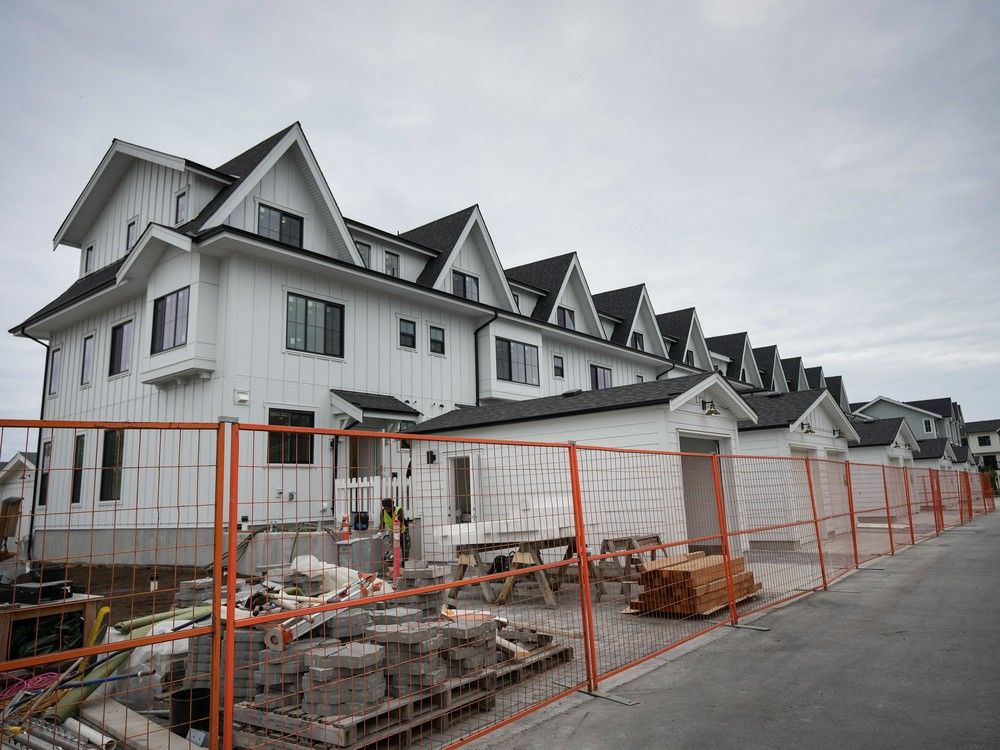
The Conservatives continue to attack what they say is the dismal Liberal record on housing.
In one of the latest charges, the Conservatives have posted a graphic online that shows housing starts down by 30 per cent in B.C., 37 per cent in Greater Vancouver, 33 per cent in Victoria, 36 per cent in Kelowna and 51 per cent in Nanaimo.
The claim
In a post on the social-media platform X , Mark Strahl, the Conservative candidate in Chilliwack-Hope, said Liberal Leader Mark Carney’s housing plan is former prime minister Justin Trudeau’s failed strategy with a new slogan.
“Carney plans to bring back Trudeau’s failed Housing Minister Sean Fraser to double down on their failed Liberal approach,” said Strahl, posting the housing graphic.
What we found
The statistics displayed in the graphic are misleading and also need context, particularly if they’re meant to support a failed housing-plan argument. The fine print shows the figures only cover housing starts from January to March 2025, which industry observers note is affected by the economic uncertainty caused by a global trade war started by the U.S.
The effect of the tariffs is important because the Canadian government has no control over U.S. President Donald’s Trump’s trade war.
A recent CMHC market outlook outlined some of the foreign trade risks to housing starts. The federal agency noted that should the U.S. tariffs cause job losses and a recession that would depress housing starts.
And the economic uncertainty and potential cost increases caused by tariffs isn’t isolated to Canada.
In the U.S., housing starts are also dropping. This week, the National Association of Home Builders in the U.S. said the impact of import duties on Canadian lumber was already being felt with the majority of builders reporting cost increases on building materials due to tariffs.
The narrow time period of the graphic also doesn’t show the larger picture in housing starts, which CMHC expects will remain above the 10-year average despite a forecast slowdown from 2025 to 2027.
The claim also misses that there are many factors that drive housing starts, including provincial and municipal policies, interest rates and the general state of the economy.
For example, in 2020 when COVID-19 hit, with the Liberals in power, housing starts dropped in B.C. That also happened in 2008-09, under the Conservatives, during the global financial recession caused by a subprime mortgage crisis in the U.S. The U.S. tariffs would be another example of this.
A broader look at the housing start stats in B.C. also shows a different picture than that shown by the first three months of 2025. It shows a general upward trend in the past 20 years.
CMHC figures show the average of the past five years of annual housing starts in B.C., from 2020 to 2024 under the Liberals, is 61 per cent higher than the average from 2011 to 2015, under the Conservatives.
In fact, in all cases where housing starts are compared during the Conservative tenure in government from 2006 to 2015 with the Liberal government after that, there have been more housing starts under the Liberals. Even adjusting for population growth, the Liberals come out ahead. The population in B.C. increased nine per cent from 2006 to 2016 when there was a Conservative government, and 23 per cent under a Liberal government.
For example, in Greater Vancouver, from 2016 to 2024, there were more than 241,000 housing starts while the Liberals were in power.
During the Conservative reign from 2007 to 2015, under a Stephen Harper government, there were more than 159,000 housing starts.
According to CMHC figures, that’s a more than 50 per cent jump under the Liberals.
That’s also true in Victoria, Kelowna and Nanaimo, where there have been more housing starts during the period under the Liberals than under the Conservatives.